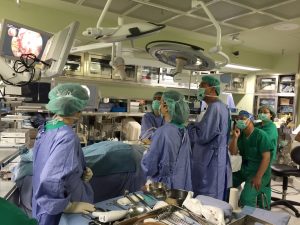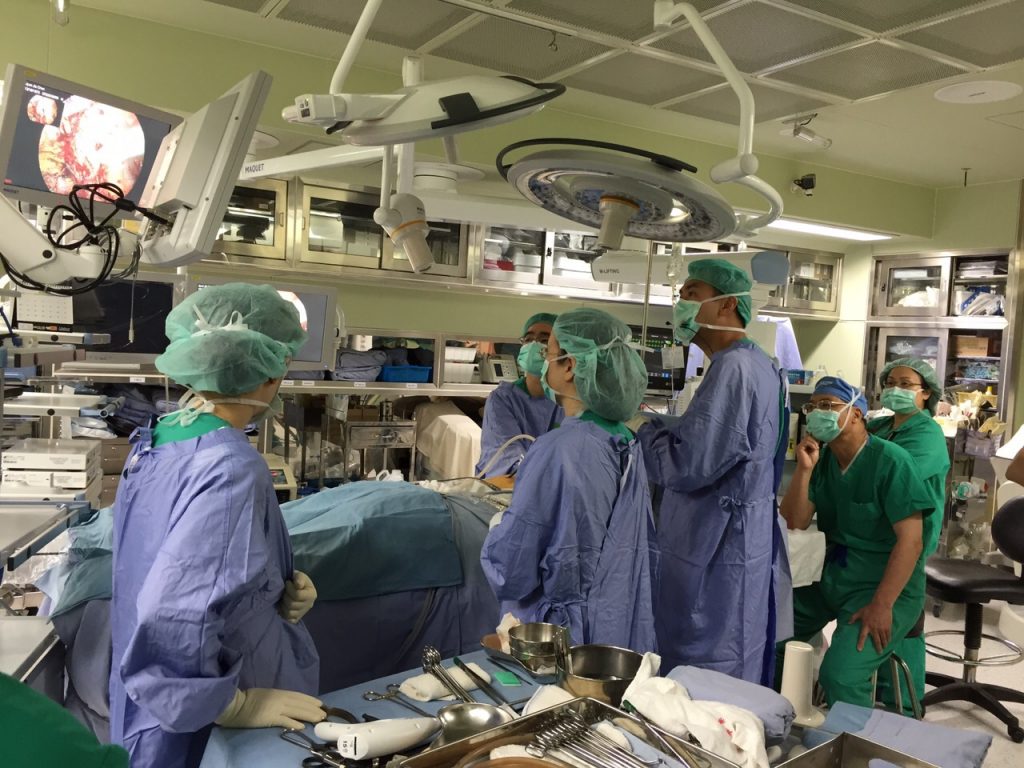Common Inguinal Hernia Questions
Recently I received another enquiry regarding hernia repair. This is not the first time I come across these questions. So I thought I would share some of the common questions with you.
1. What technique do you use for your inguinal hernia repair?
The technique that I routinely use is called the laparoscopic total extra peritoneal repair (TEP hernia repair). Patients who undergo this operation have less pain and are able to return to work earlier. This is one form of keyhole surgery. Patients who are not suitable for a laparoscopic repair will undergo the traditional open technique commonly known as the Lichtenstein tension-free mesh repair.
2. How long have you been using this technique?
I did my first inguinal hernia operation more then 20 years ago. During that time it was done in the open fashion. The laparoscopic approach was introduced to me in the mid 2000. Comparing the open and laparoscopic technique, I believe that patients do recover much quicker from the laparoscopic approach. I have been routinely using the laparoscopic technique for more then 10 years.
3. Will I have scars and how long are the cuts?
Yes, you will have scars after any operation.
For the laparoscopic TEP, I usually make 3 incisions. One incision will be 1 to 2 cm just below the belly button for the camera and putting the mesh in. The other 2 cuts are less then 1cm for the operating instruments.
The traditional approach will be an incision along the groin area. For the average person, the cut will be approximately 5 to 8 cm.
4. What kind of anaesthesia will I go through?
Anaesthesia used in hernia repairs can be general or local with sedation. In this day and age, general anaesthesia is relatively safe , especially in surgery where operating time is short.
All my laparoscopic TEP repairs are done under general anaesthesia. For laparoscopic TEP repair, patients abdominal muscle needs to be relaxed for the surgery. Patients are also more comfortable compared to regional or local anaesthesia.
In my experience, general anaesthesia is routinely used even for the open hernia repair. Local anaesthsia with sedation is used in selected patients who are not fit for general anaesthesia.
5. Doctor, what is my downtime after the operation?
Patients who have a hernia repair will be admitted on the same day of the surgery. The operation can be done as a day surgery or overnight stay. My preference is for my patients to stay overnight. Post operatively, some patients may feel nauseated or experience some pain. While they are in hospital, there are medical and nursing staff around to manage those symptoms.
Patients after laparoscopic TEP repair will be able to walk around, go to the bathroom, have a shower and have a meal. They will be discharged the next morning after my review.
They are advised not to have strenuous exercise for about 4 weeks. Walking, shopping, going to work is not a problem. All my patients are given hospitalisation leave. Some of them will feel bored after staying at home for a few days and decide to go back to work.
I do hope this answer some of the common questions asked. If you do have any other queries, please feel free to drop us a text or call.
(Featured Image: Live TEP surgery demonstration in Cathay General Hospital, Taiwan. Year 2015.)
Share this blog via:
- ← “Doctor, why is my reflux or gastritis pain getting worse?”
- Infected Gallbladder vs Symptomatic Gallstones – A picture (or video) paints a thousand words →





